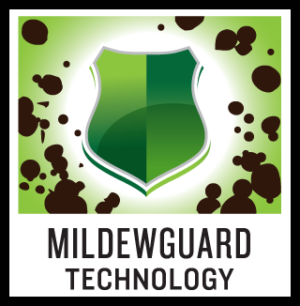The terms mildew and mold typically refer to either fungus or algae, both living, microscopic organisms present in the atmosphere.
What are the ideal conditions for mildew growth?
Fungus and algae thrive in hot, humid, and moist environments, where there is an abundance of organic food source, and periods of darkness.
Why does mildew and mold grow on painted surfaces?
The airborne fungal spores and algal organisms land on the paint surface, and, the flatter and more porous the film, the easier they will be able to adhere to and penetrate the coating. There, they feed on the organic elements inside of the paint film, such as calcium carbonate, polymer emulsion & additives, as well as organic materials that land on the paint film, from sea spray and wind.
Conventional biocides are mildew-killing microscopic molecules that are freely dispersed throughout the paint. As the paint film ages or weathers, these biocides come through the surface of the paint film, and kill mildew growing on the surface.
The more moisture the paint film is exposed to, the more and faster these biocides are released, and the more UV rays the biocides are exposed to, the faster they evaporate into the atmosphere.
In the Caribbean, where moisture and UV levels are high, most of the mildew-killing biocides in paints have been exhausted within the first six months to a year after painting.
THOR’s unique AMMETM biocides are encapsulated, or held in organic shields that bind them together inside of the paint and slow down their rate of release, even when in contact with moisture and UV.As a result, the biocides stay in the paint for much longer, and are released in a controlled fashion over time, providing more mildew-killing protection for longer.
Download the full poster for our Mildew Guard Technology to learn more.